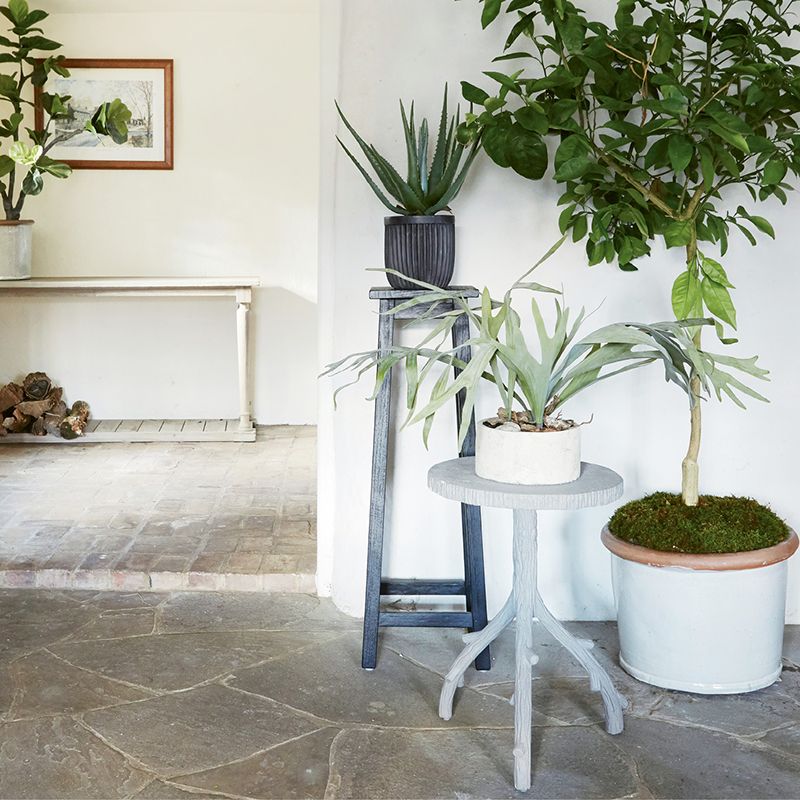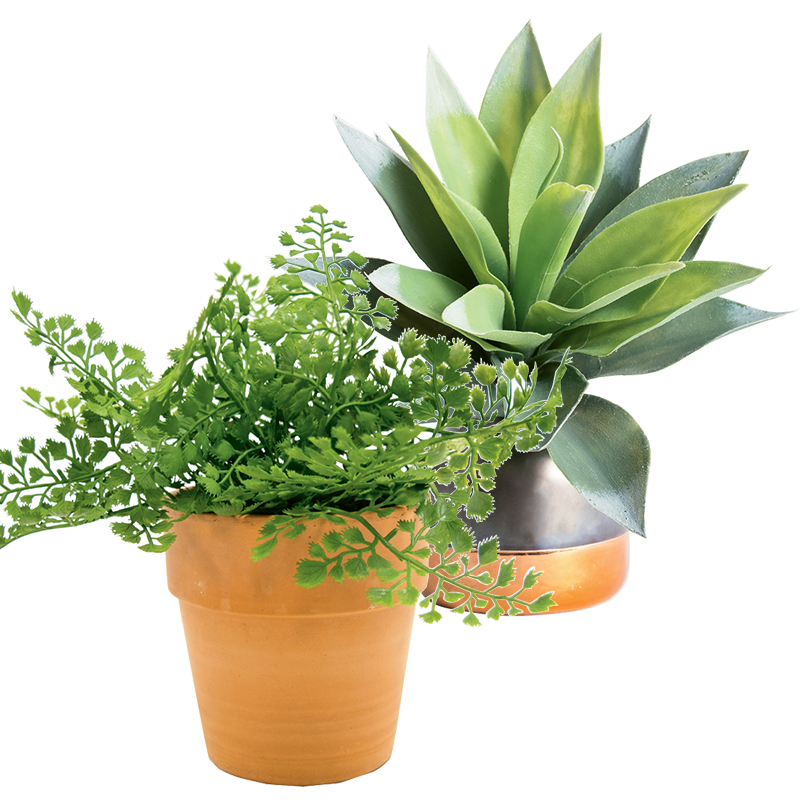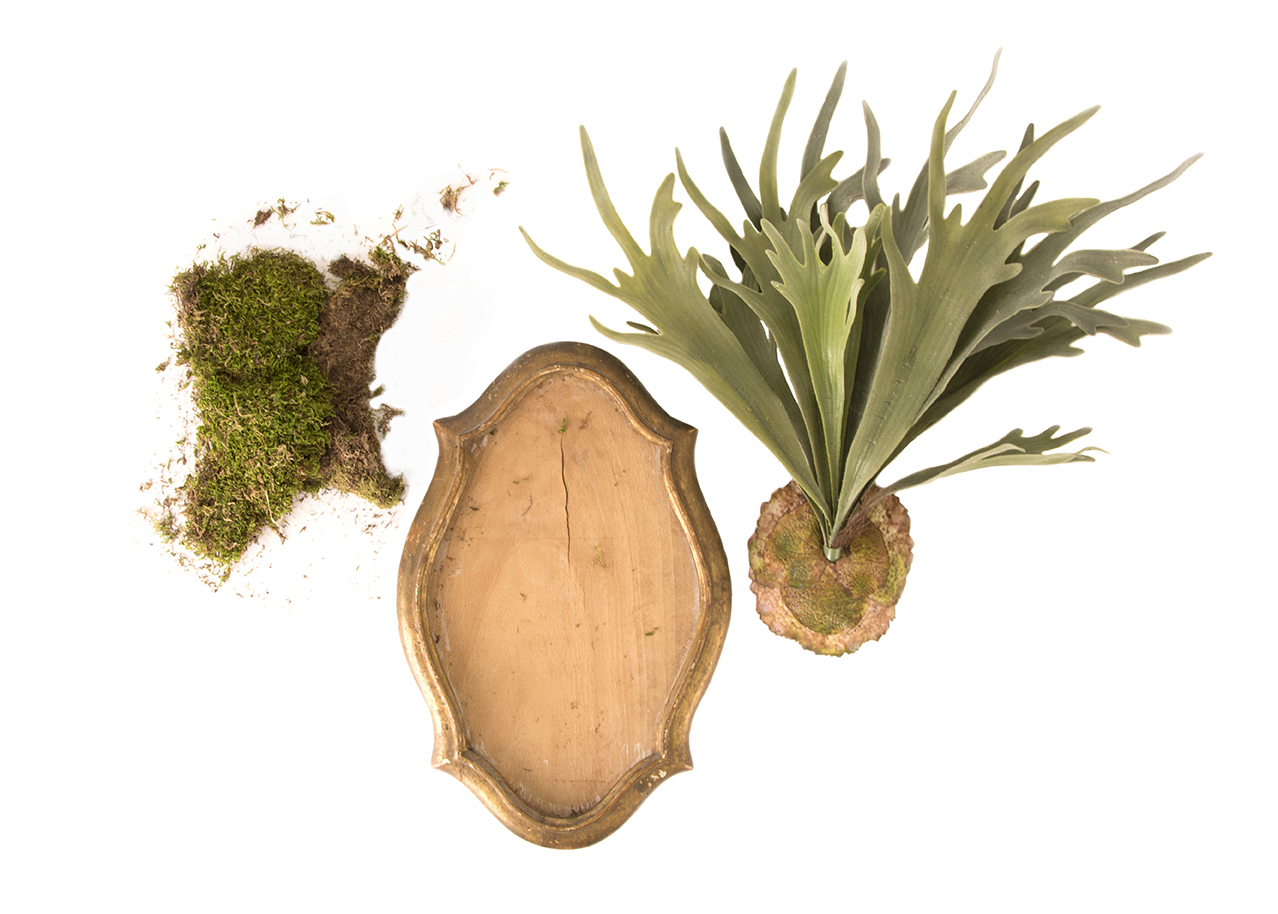Today’s fake plants go undercover with ease, giving you an organic look—with no responsibility

Terrain, sister brand to Anthropologie, sells high-end faux options including (back left to right) a fiddle leaf fig tree, an aloe plant, and a staghorn fern at shopterrain.com.
Nothing can replace the satisfaction of watching a new frond uncoil on your kitchen-counter fern or seeing a monstera reach to fill a living room corner with tropical drama. Indoor gardening is as entertaining as it is therapeutic. But let’s be honest: bright, indirect light is harder to come by than House Beautiful reveals, fiddle leaf figs are devilishly finicky, and even the most well meaning grower can forget to water.

(Left to right) A Fourteen & East fern ($20); agave ($14) displayed in a metallic vase ($12), both from Charleston Flower Market
If you’re among those discovering (plant after dead plant) that reality interferes with your bring-the-outside-in vision, it’s time to take the leap: go faux. “Everyone has a mental block when it comes to fake plants—they think they need to have everything fresh,” says Louise Thackeray, owner of Charleston Flower Market. “But today, the high-quality versions look so real. Once people try them, they wonder, ‘Where have these been all my life?’”

Design a succulent garden using stems ($9-$14) from Charleston Market.
Charleston Flower Market may have the area’s widest selection of faux flora—from succulents to giant palm leaves—but the gift shop at Hyams Garden Center is also well stocked, and sweet boutique Fourteen & East has a small selection. National retailer Terrain is the go-to for anything big, including philodendron and the coveted fiddle leaf fig tree.
The best imposters will make you do a double-take, but to avoid blowing their cover, bear these pointers in mind.
■ Place wisely: Situate fakes in environments where their real counterpoints might actually survive, and display them in appropriately sized containers.
■ Add organic elements: “We’ll attach curly willow to a silk orchid, just as we would a living one,” says Thackeray. Natural moss is great for top-dressing pots; garden editor Joan McDonald even used it to style a Flower Market staghorn fern.
■ Keep them clean: Dust leaves regularly, and watch out for fading.
Going Stag
Garden editor Joan McDonald explains how to make wall art from a faux staghorn fern and a salvaged frame

Materials
Styrofoam ball, about 4 inches in diameter
Faux staghorn fern (available locally at Charleston Flower Market)
Frame of your choice
Hot glue or Gorilla Glue
Preserved sheet moss

Process
1. Cut styrofoam ball in half.
2. Push the central stem of the staghorn into one of the halves of the ball.
3. Trim the stem so that it is flush with the flat side of the ball.
4. Glue the flat side of the ball to the frame.
5. Glue moss to the frame around the ball.
6. Hang for low-maintenance “natural” beauty.
Photographs by (7) Melissa Sommer & (DIY materials) Natalie Moreau & courtesy of (interior) Terrain